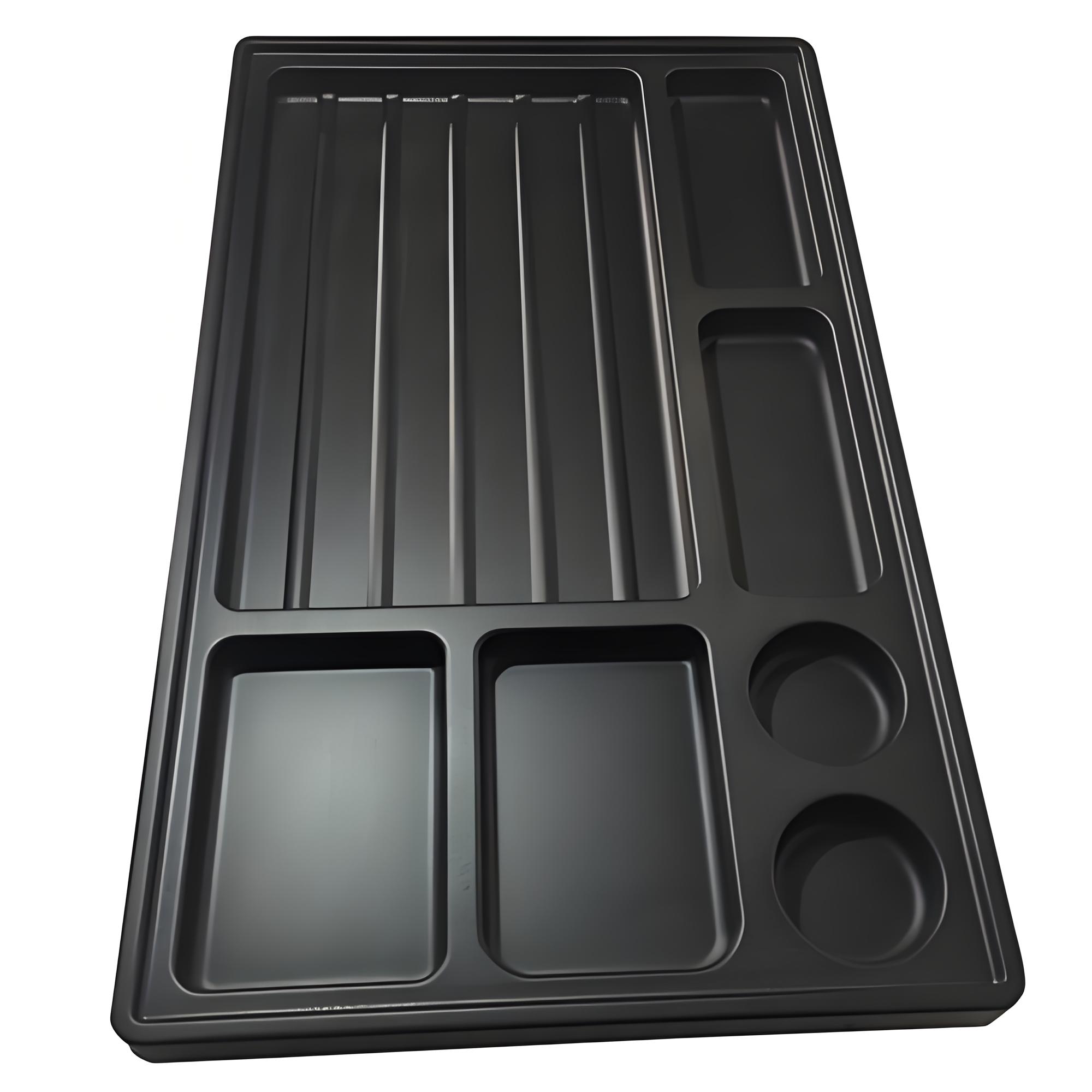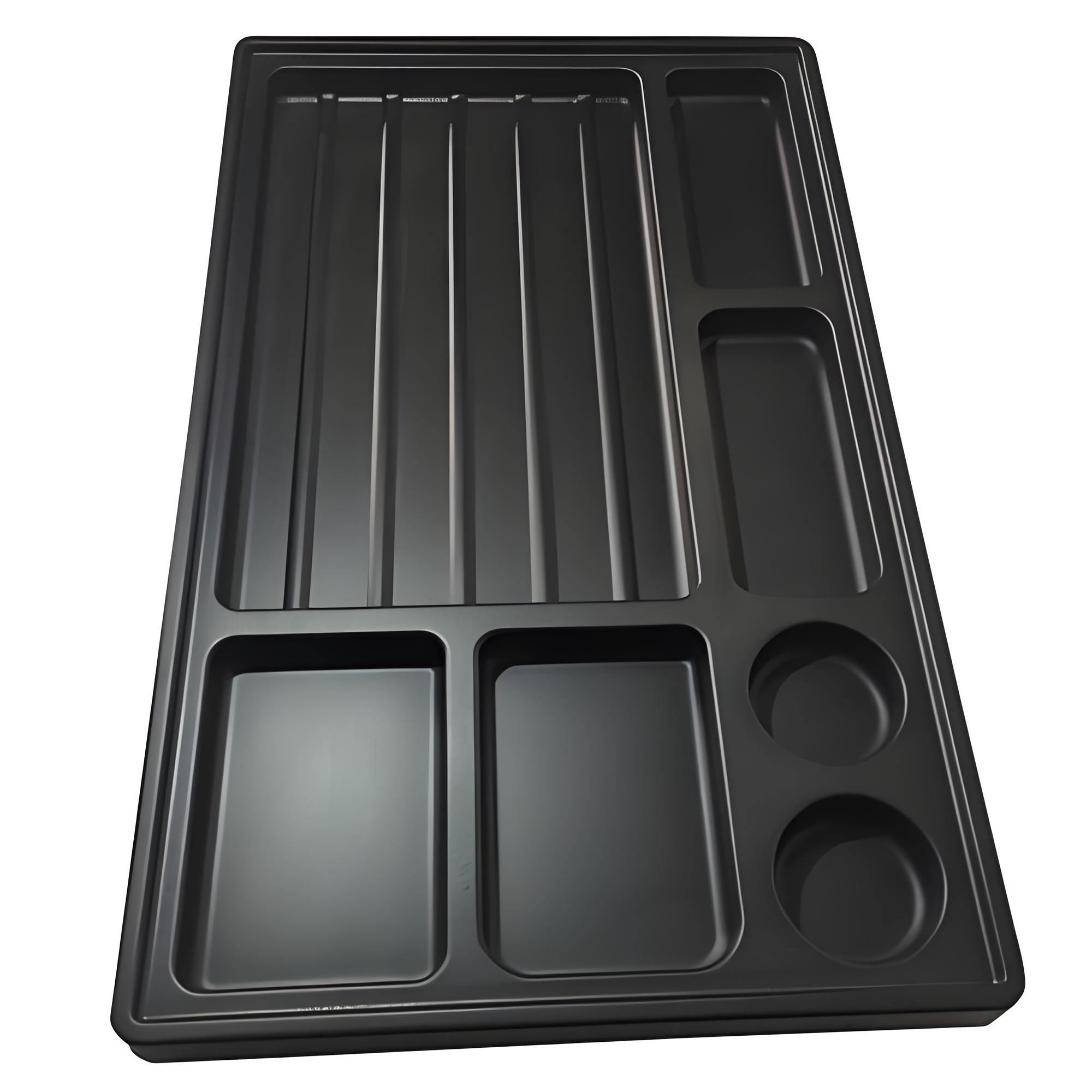- Home
- Capability
- Products
- About Us
- Service Industry
- Service Cases
- Video
- Contact Us
-
Language



Introduction to ABS Plastic
 ABS plastic is a thermoplastic widely used in various fields due to its excellent mechanical properties, processability, and surface glossiness. It has good impact resistance, heat resistance, and chemical corrosion resistance, while being easy to process and shape.
ABS plastic is a thermoplastic widely used in various fields due to its excellent mechanical properties, processability, and surface glossiness. It has good impact resistance, heat resistance, and chemical corrosion resistance, while being easy to process and shape.
Principle of Vacuum Forming
Vacuum forming is a plastic molding technology, whose basic principle is to heat the plastic sheet to a softened state and then place it above the mold. By using the vacuum system inside the mold, the air inside the mold is extracted to create negative pressure. Under the action of negative pressure, the softened plastic sheet is adsorbed onto the surface of the mold and closely adheres to the shape of the mold. As the plastic cools and solidifies, it ultimately produces plastic products that conform to the shape of the mold.
ABS plastic Vacuum Forming Process
Preparation stage: Select suitable ABS plastic sheets and design and manufacture molds according to the shape and size of the required product.
Heating stage: Place the ABS plastic sheet into the heating device and heat it to an appropriate temperature to soften it and have a certain degree of ductility. The heating temperature and time should be adjusted according to the characteristics of ABS plastic and the requirements of the desired product.
Molding stage: Place the softened ABS plastic sheet above the mold and activate the vacuum system. As the air inside the mold is extracted, the softened plastic sheet is adsorbed onto the surface of the mold and closely adheres to the shape of the mold. At this point, it can be observed that the plastic sheet gradually deforms and fills the contour of the mold.
Cooling stage: After the plastic sheet fully conforms to the shape of the mold, turn off the heating device and start the cooling system. By cooling, the plastic gradually solidifies and maintains a stable shape.
Demoulding stage: After the plastic is completely cured, open the mold and take out the molded product. At this point, the ABS plastic vacuum forming process is completed.
Application and advantages
Low Cost: This technology offers a more economical solution compared to other forming methods, making it ideal for large-scale production and helping to reduce overall manufacturing expenses.
High Flexibility: It can produce products in a wide range of shapes and sizes, providing the flexibility needed to meet diverse design requirements across various industries.
High Production Efficiency: Featuring a high degree of automation, this process can rapidly produce large quantities of products, significantly improving output and meeting market demand promptly.
High Material Utilization Rate: It minimizes material waste, contributing to cost reduction and aligning with sustainable manufacturing practices.
Good Surface Quality: The formed products exhibit a smooth and even surface finish, enhancing visual appeal and requiring minimal post-processing.
FAQ
1. What is vacuum forming?
Vacuum forming is a simplified version of thermoforming where a plastic sheet is heated and formed over a mold using vacuum pressure. It's widely used for producing parts and products across various industries due to its cost-effectiveness and flexibility.
2. Why choose ABS plastic for vacuum forming?
ABS (Acrylonitrile Butadiene Styrene) is a popular thermoplastic for vacuum forming due to its high impact resistance, excellent finishability, and moderate chemical resistance. It's suitable for automotive panels, protective covers, and appliance housings.
3. What are the advantages of vacuum forming ABS plastic?
Low cost: Compared to other forming technologies, vacuum forming has a lower cost and is suitable for large-scale production.
High flexibility: Can produce products of various shapes and sizes to meet different design needs.
High production efficiency: With a high degree of automation, it can quickly complete the production of a large number of products.
High material utilization rate: Reduces material waste and lowers production costs.
Good surface quality: The formed product has a smooth and even surface, with good visual effects.